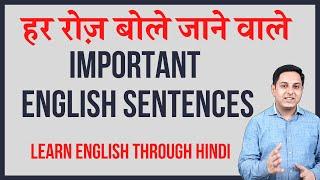
Monetary policy tools | Financial sector | AP Macroeconomics | Khan Academy
Комментарии:

Awesome. First😁
Ответить
Monetary policy tools are very important. If they are not effective, the government will be in debt or will be closed :0
Ответить
It's a great video, Thanks
Ответить
This recent series is very interesting. Learning a lot, thanks.
Ответить
If the FED decided they wanted to maximize their balance sheet, aka increasing the number of assets that they possess (profits re invested or just deposited into the treasury to lower taxes), all they would have to do is raise the reserve requirement and make up the difference of what would have been the natural increase of supply just by printing...
Why aren't they doing that?

Thanks for sharing!!!
Ответить
Why the money is inelastic?
Ответить
You're smart
Ответить
Bitcoin.
Ответить
Sir how do you write on screen
Ответить
what is the name of the application in which they draw?pls help
Ответить
Isn't it like that, that when the government increases the money supply, people would demand more and thus there will be an increase in prices and interest rate. So why when the government increases the money supplied, the interest rates fall`?
Ответить
Good content but I kind of only get 20% of it :(
Ответить
What happens when those bonds mature? Money ends up back in the economy and causes inflation again?
Ответить
May God grant you many years to live,
thank you so much I gained a lot.

great video
Ответить
Do you have a video on the balanced budget multiplier?
Ответить
Very general. You should add, that first, real life money multiplier is never equal to formula values, secondly ECB and other European banks as well as other banks in the world frequently use discount rate, lombard loans rate, repo rates and overnight facilities to target inflation rather then trade on open market. Also many people with no economy education are super confused by what this words, that when central bank buys out the government bond, they just add digits to bank account...You should know its not exactly like that. Tell about Central Banks active / passive operations (just like any other normal banks). Tell about REPO auctions and take as example some european country with no EU currency or Asian economy, or Canada. Tell about Central Banks gold / currency reserves around the world. Because like this people have another 200 valuable questions.
Ответить
This guy literally teaches every subjects ! and teaches them very well! I survived my calc class with his videos and now the same guy is saving me from Macroeconomics!
Ответить
great video ! i need your help , im looking for information about the money targeting and inflation targeting. i searched on goggle but didn’t find a easily explanation . thanks
Ответить
Good luck for the exam tomorrow
Ответить
About the multiplier: doesnt this assume that banks always lend all the money they possibly can? But what if the banks don't find enough credit-worthy borrowers?
Ответить
Thank you so much !!!
Ответить
I LOVE YOU
Ответить
Thanks a Lot 💙
Ответить
These videos are helping me understand CFA topics I was struggling with. Thank you!!
Ответить
Wrong on fed buying treasuries direct...the primary market participants (banks) purchase them...taking money away from private sector, and the the fed buys those bonds off the banks and increases their the banks, (primary market buyers) reserves at the fed....equals less money for lending at private sector within the banks (unless banks draw on fed reserves)...whilst supposedly more money in existence.
Ответить
Hi! Thanks for an useful lesson. May I ask what can make monetary policy less effectivenesss?
Ответить
Awesome..going over old stuff to utilize the brain.. lol.
Ответить
why would govt want to reduce the supply of currency can any body explain me it?
Ответить
Thank you, it’s clearly explaining ever!
Ответить
Thanks so much.
Ответить
Monetary policy tools? More like "With Khan Academy, you can't loose!" Thanks again for everything.
Ответить
Great video. Easy understanding for learners.
One thing I want to know is that quantity of money which equals to M1 ( Cash+Demand deposits) & MS curve represents M2 (M1 + Time Deposits). Thank you.

Monetary policy is determining or controlling the cost to obtain credit.
Using the tools provided to it, the Fed controls the cost to obtain credit. They do not control the money supply but do influence it. Most of the money supply is bank credit and controlling the cost to obtain that credit influences the supply of it. Monetary policy does not control, in any way, the net supply of government liabilities.
Banks have two accounts with the Fed, a securities account and a reserve account. Moving a sum of government liabilities from a bank's securities account to the bank's reserve account is not printing money or increasing the overall supply. It is simply changing the form of the government's liability. Monetary policy is not the creation or destruction of money, that's fiscal policy.
Securities can only be purchased with reserves. Converting those securities back to reserves is not money creation. The creation of reserves only occurs through fiscal policy.
Lower rates incentivizes borrowing. Higher interest rates increase costs (inflation) and disincentivize borrowing. The cost of credit is reflected in the cost of all goods and services. So, increasing the cost to obtain credit will, of course, results in inflation.
What we have are minimum reserve ratio requirements. Not fractional reserve banking. We haven't had fractional reserve banking for over a century. We do not have a "multiplier effect" because banks are not financial intermediaries and do not lend reserves or deposits. Banks only lend monetized bank credit.
This video is nothing more than a prime example of an ecenomic theology that disregards reality for the sake of orthodoxy consistency.

Thanks a lot professor. I have a question and I would be ecstatic if you clarify me.
Is interest rate the same with discount rate ? I mean who determines it banks or Central Bank(FED)?
For example, from my understanding if there is a high inflation in economy , fed increase discount rate in order to decrease money supply (because they want to target interest rate by banks over loans) in economy and in that case banks increase interest rate (precautions against people who want to get deposit back) for attracting depositors which all of these has an negative impact on increasing prices.

Your Chanel is excellent by the way your voice reminds me a little bit of Thomas Sowell.
Anyway would you sir be willing to do a video explaining Scotish social credit? It would be awesome if you could.
You have got a new subscriber

If there is a thing that made me dumb is selling and buying bonds about who is getting the money and who is giving ... Not knowing the relationship is inverse, if the FED sells a bond it means they are getting money from circulation, if they buy a bond it means they are injecting money into circulation.
Ответить
I don't know what I would do without Khan Academy. Thank you so much!!!
Ответить
this video is super informative and really breaks down complex concepts in a simple way. i appreciate the clarity! however, i gotta say, while i get the importance of monetary policy, sometimes it feels like it favors banks more than everyday people. what do others think about that?
Ответить

























